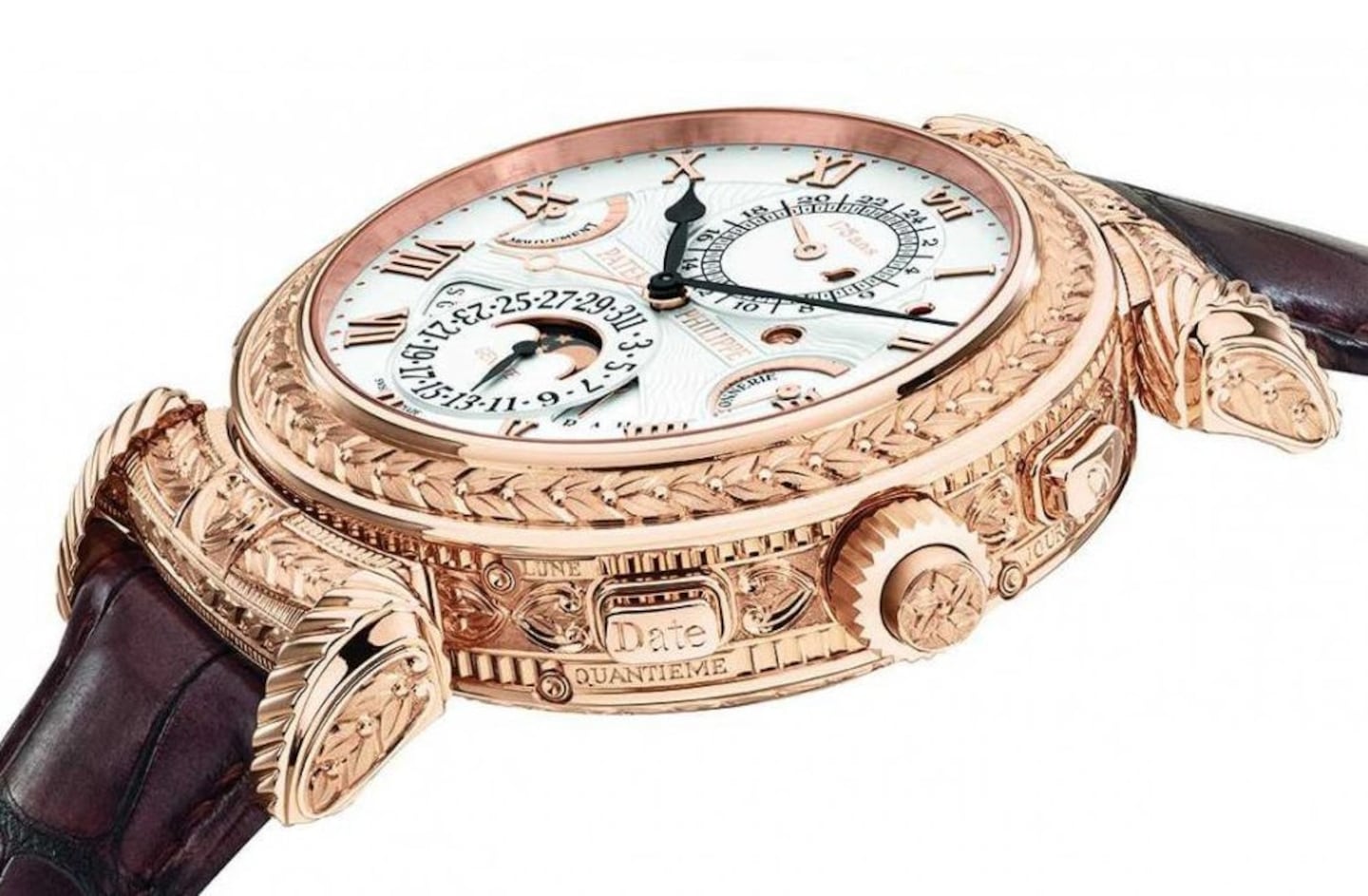
The Business of Fashion
Agenda-setting intelligence, analysis and advice for the global fashion community.

Agenda-setting intelligence, analysis and advice for the global fashion community.

GENEVA, Switzerland — Patek Philippe's $2.5 million Grandmaster Chime watches sold out just months after they debuted, a sign of the buoyancy at the top of the luxury-goods market as buyers paid as much for a timepiece as they could have spent on a yacht.
Six of the pieces commemorating Patek Philippe’s 175th anniversary have been ordered, and the seventh will be showcased at the Geneva-based watchmaker’s museum. The line is still in production, and the third will be delivered to its new owner next month, Chairman Thierry Stern said Wednesday in an interview at the watch fair in Basel, Switzerland. It will take two years to make all of them.
“It’s just a matter of having the cases, which is very difficult because it’s hand-engraved,” Stern said at the Baselworld trade show, where the largest watch and jewelry brands are showcasing their latest creations to more than 150,000 expected attendees.
The Grandmaster Chime, which rings out the time, displays two time zones and adjusts for leap years, costs about as much as a 64-foot Italian-made Azimut yacht with oak and leather interiors and a walk-in closet. While the Swiss watch industry has been suffering a slowdown in demand, Patek Philippe has been expanding and earlier this year unveiled a 450 million-franc ($452 million) investment plan.
ADVERTISEMENT
“Patek is often seen by collectors as a sort of holy grail,” said Bassel Choughari, an analyst at Berenberg in London.
Limited Production
Patek Philippe plans to make 58,000 watches in total in 2015, an increase of 5 percent from last year and more than 30 percent higher than its capacity five years ago. The family- owned watchmaker doesn’t plan to boost annual production beyond 100,000, Stern said.
“Quality would be hit,” he said. “We’re not made for that.”
The Swiss watch industry is reeling from a slowdown in export growth to 1.9 percent last year, down from as much as 22 percent in 2010.
In January, Patek Philippe announced plans to add a 50,000 square-meter building to its production site in Plan-les-Ouates near Geneva. The facility will give the watchmaker sufficient space for the next 20 to 30 years, and will also be used for service and training. The company fixes 70,000 to 80,000 timepieces a year, its chairman said.
“We’ve been here since 1839, so there’s a lot of watches around the world,” Stern said. “It’s important to me to say, yes, we’re still able to fix all of them.”
‘Currency Problem’
ADVERTISEMENT
The day after Patek Philippe announced the 450 million- franc investment, the Swiss National Bank made its shock decision to lift the cap on the euro, which led to a surge in the franc.
To adjust to the currency fluctuations, the brand, whose least expensive watches sell for about 11,000 francs, last month cut prices in the Americas, Switzerland and Asia, while raising them in Japan and Europe.
“It’s 100 percent a currency problem,” Stern said. “Demand is quite high, but we had to adapt our prices, sadly. You’ve got to see it as a long-term investment.”
Patek Philippe is the maker of the most expensive timepiece ever sold in auction. The Supercomplication pocket watch, finished in 1933 on custom order for New York banker Henry Graves Jr., fetched 23.2 million francs at a Sotheby’s auction in Geneva in November.
By: Corinne Gretler and Tara Patel; editors: Matthew Boyle and Thomas Mulier.
From analysis of the global fashion and beauty industries to career and personal advice, BoF’s founder and CEO, Imran Amed, will be answering your questions on Sunday, February 18, 2024 during London Fashion Week.
The State of Fashion 2024 breaks down the 10 themes that will define the industry in the year ahead.
Imran Amed reviews the most important fashion stories of the year and shares his predictions on what this means for the industry in 2024.
After three days of inspiring talks, guests closed out BoF’s gathering for big thinkers with a black tie gala followed by an intimate performance from Rita Ora — guest starring Billy Porter.